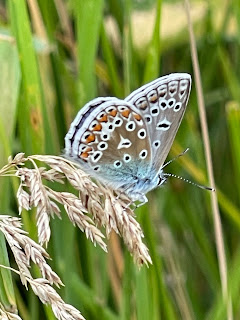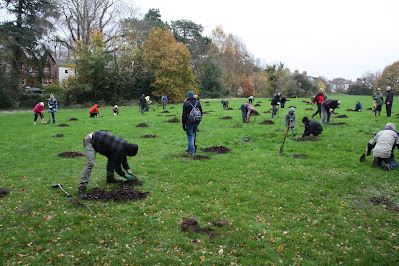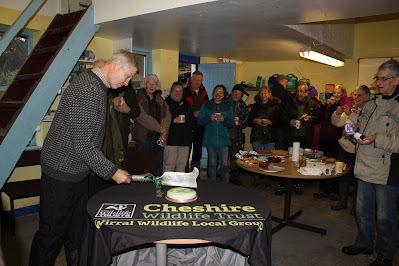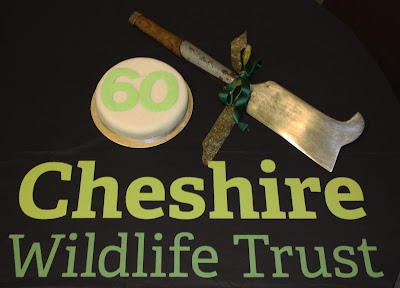Many thanks to Roy Lowry for sending us his report and photographs of the hoverflies he has recorded at New Ferry Butterfly Park.
I thought I should start with a brief introduction. I am a retired oceanographic data manager with an interest in wildlife photography going back to the 1970s. Since retirement I have developed an interest in insect photography, using it as a tool for invertebrate recording. This has led to my becoming involved in two invertebrate recording projects, one in the Butterfly Park and the other in the Chester Zoo estates such as the nature reserve and the wildlife corridor. My Butterfly Park surveying during 2022 has involved 23 visits between the beginning of April and the end of October and whilst I record anything that flies or crawls, hoverflies are one of my main subjects. I became interested in them about five years ago when my identification skills were non-existent. Since then, I have developed to the stage where I can identify around 50% of UK hoverfly species reliably, learning a few more each year. My progress up this learning curve has been greatly assisted by corrections and patient guidance from experts on the identification platforms such as Matthew Vosper and Ian Andrews on iNaturalist and Roger Morris on iRecord.
Whilst bees capture the headlines as pollinators, hoverflies are just as important. Their larvae have many, varied lifestyles but the adults, like butterflies, mainly make a living by visiting flowers for nectar. During feeding they get covered in pollen which is then transferred to other flowers. One of the objectives of projects like the Butterfly Park is to provide an environment that supports as many different insects as possible. As far as hoverflies are concerned this has been successfully achieved during 2022. During the year I have recorded 25 different hoverflies to near species level plus an additional 7 identifications to genus level. My best estimate is that this gives a species count of 30 different hoverflies.
 |
Hornet hoverfly (Volucella zonaria) - left
and lesser hornet hoverfly (Volucella inanis) - right |
I will now give a brief introduction to some of the hoverflies that may be found on the reserve. Adult hoverflies are totally defenceless and, as many are quite large, they provide nutritious snacks for many predators. Their main strategy for escaping the menu is by pretending to be something else that is far from defenceless such as bees, wasps and even hornets. Two species of hornet mimics regularly found in the Butterfly Park in July and August are shown in the photo above. The one on the left is the hornet hoverfly (Volucella zonaria) and the one on the right is the lesser hornet hoverfly (Volucella inanis). Both species are increasing their range northwards and have only been recorded on the Wirral in the last four or five years.
 |
| Bumblebee hoverfly (Volucella bombylans plumata) |
The hoverfly above is one variant of the bumblebee hoverfly (Volucella bombylans plumata) that does a reasonable impersonation of a buff-tailed bumblebee. A second variant, also seen in the Butterfly Park this year, pretends to be a red-tailed bumblebee. Another large group of hoverflies known as the drone flies choose to impersonate honeybees. A typical example, the common drone fly (Eristalis tenax), is shown below.
 |
| Common drone fly (Eristalis tenax) |
Whilst there are other bee mimics, most hoverfly species have chosen to impersonate wasps with yellow and black striped abdomens. One of the commonest that may be seen all over the Wirral throughout the year is the batman hoverfly (Myathropa florea) shown below. The common name comes from the distinctive marking on the thorax which resembles the signal that calls the Caped Crusader to Gotham City. The insect in the background is a birch shieldbug.
 |
| Batman hoverfly (Myathropa florea), with birch shieldbug (Elasmostethus interstinctus) in the background |
One of my favourite wasp mimics, the hook-barred spearhorn (Chrysotoxum festivum), is shown below. The common name comes from the shape of the yellow markings on the abdomen and its antennae.
 |
| Hook-barred spearhorn hoverfly (Chrysotoxum festivum) |
So, that’s my quick run through hoverfly mimicry. They may look ferocious, but hoverflies are totally harmless and neither bite nor sting. They are beneficial in many ways. In addition to pollination, the larvae of many species are predators of pests in the form of aphids and even wasp grubs. So, please admire their beauty but don’t fear them or harm them. They are our friends.
All photographs were taken by me in New Ferry Butterfly Park during 2022 and are published under cc-by licence.
Roy Lowry














